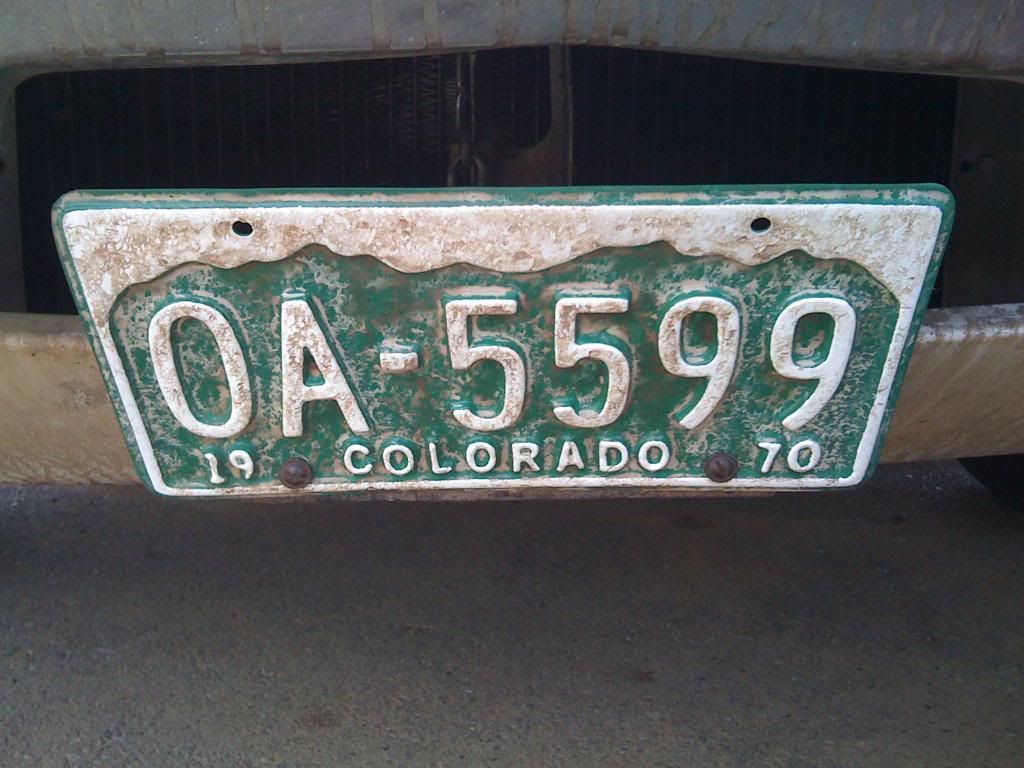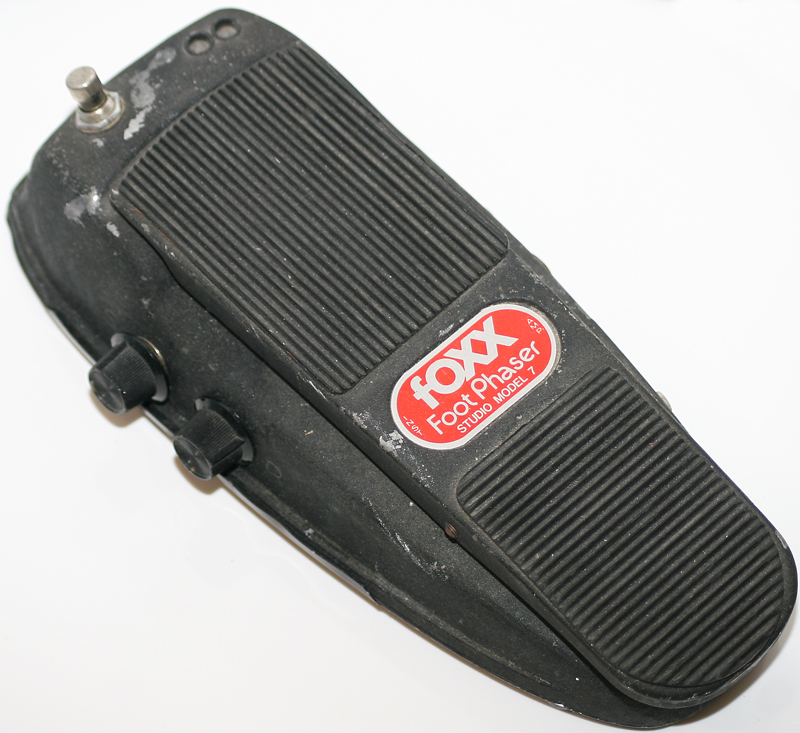Re: Ritchie Blackmoreworldoftone wrote:The question is WHEN did Ritchie start using Majors regularly? I would have to look thru a bunch of old Purple footage I have to see. I know he was using them at the start of the Rainbow.
- WOT
Tip: Styles can be applied quickly to selected text.
Ross go to this link.... http://www.treblebooster.net/" onclick="window.open(this.href);return false;worldoftone wrote:The question is WHEN did Ritchie start using Majors regularly? I would have to look thru a bunch of old Purple footage I have to see. I know he was using them at the start of the Rainbow.
- WOT
on the left menu is the Tone Zone, click on Ritchie Blackmore and you will find a very comprehensive analysis by Bernd Meisner, the guru behind BSM Treble Boosters and whom I consider just as great a Blackmore expert as Dawk, just not a pain in the ass like he seems to have become..
At the end of 1968, DP_Mk1 was the opening act on the "Cream" tour, at this time Deep Purple was well known in the USA, but not in their home country England. It was the last tour for "Cream", before the band felt apart. It was a sad situation for Eric Clapton, after Ritchie opened the concerts with his agressive guitar show, the guitar orientated audience wanted to hear more Blackmore. So after only a few shows, Deep Purple was payed out to leave the tour. During this days, a retired Stratocaster from Eric Clapton was given to Ritchie, and he soon felt in love with this model. Especially the tremolo caught his eye, compared to the Bigsby on his Gibson ES-335, this was a real enhancement. Ritchie bought a stock 1968 black maple neck Stratocaster in spring 1969. The 68 Strats still had the 0.1uF tone cap, so you could dial in a more bassy tone on this pre-71´Strats as on the later Strats with the 0.047uF tone cap. Besides this, the 68 Strats still had the two-piece old tremolo construction with the steel inertia bar and the stamped vintage steel saddles. For this tremolo, Ritchie used a special custom made 1/4" (6.3mm) heavy weigthed steel arm, to attack the tremolo real hard. At the end of 1970 / early 1971 the worn-out frets of this Strat were replaced with Gibson jumbo frets. The maple fretboard was not newly lacquered afterwards, so it became noticeably darker with time. This was the guitar, Ritchie used to record "Fireball" at spring 1971. This black 68´Strat was Ritchie´s main axe until summer 1972.
As for amps, Ritchie used the 200 watt Marshall Major models right from the start with Deep Purple. Until summer 1973 Ritchie played his Strat live only into a treblebooster and from there directly into his amps. In the studio, Ritchie used this booster until 1975. He also used the Dallas-Arbiter FuzzFace in his early days, sometimes even with a treblebooster in front of it to push it harder. This sound can be heard on the legendary "Deep Purple in Rock" recordings. With this configuration (pushing the old two-transistor FuzzFace with a treblebooster), Ritchie created a very similar circuit with identical sound character as the end 60´s common 2nd generation Fuzz boxes like the Solasound Professional Mk2 or the Marshall Supa Fuzz that Eric Clapton really liked.
At the beginning of 1971 a new 70´s sunburst Strat showed up, sporting a four-bolt maple neck with skunk stripe, two-piece steel tremolo, stock pickups and electrics and like on his old black Strat, a heavy custom-made tremolo arm out of steel, but not as heavy and thick as on the 68 Strat. The lacquer of the neck was peeled off right from the start, but the frets stayed untouched. This is the reason why the fretboard looked darkened after only a short time. This sunburst Strat was used 1971 in parallel to his old black Strat. The legendary "Beat Club" from September 1971 was recorded with the 70´s sunburst Strat. So Blackmore played live with an unpainted maple fretboard during the years 71 and 72. Another stock late 1971 sunburst maple-neck Strat was aquired at the end of 1971 as a backup for the airy-sounding main sunburst Strat, which was later on replaced with this substitute guitar.
Note: At this time, Fender released a lot of new features on the Stratocaster: the three-bolt neck attachement with tilt-neck feature, the bullet truss-rod, the smaller 0.047uF tonecap and of course the new diecast tremolo construction, which had a great influence on the overall tone. This new diecast tremolo was a one-piece construction and even the new rectangular saddles were out of diecast. With this tremolo, the tone was more rounder, softer and with a more pearly attack.
The fretboard of this brandnew 71 Strat stayed untouched. You can hear this stock 71 sunburst Strat (at this time without the tremolo modification) on the "Machine Head" recordings from December 1971, as well as the 70 Strat from December 1971. After retiring the 70´s sunburst Strat around summer 1972, Ritchies guitar tech pulled the old, modified two-piece steel tremolo with the custom-made tremolo-arm out of it, and put it into Ritchies new 71 sunburst Strat, because the new Fender one-piece diecast tremolo was not a good option for Ritchies modification. Steel is much harder and less fragile compared to diecast. It was no problem, to tap a larger thread into the steel block of the tremolo, to make the custom-made tremolo-arm fit perfectly. As a second modification, Ritchie replaced the old steel saddles of his steel tremolo with the new ones out of diecast. Naturally, both sunburst guitars looked very similar, you can identify the new 71 Strat because of the "bullett trussrod" on the headstock, the older 70 Strat still had the classic trussrod with the walnut-dot at the headstock. Another difference is the fretboard, the 70 Strat had a much darker one, because of the missing lacquer, showing all the dings and dongs from years of playing. The new 71 Strat sounded a little less punchy, possibly caused through the new three-bolt neck construction, but because of the use of a treblebooster this was more or less negligible. The new 71 Strat had a more airy and pearly attack, something that Ritchie really liked and felt in love with more and more. The 68 Strat was only used from time to time until mid 1972, when Ritchie decided to play a show with a really fat and overdriven sound - this was where his 68 Strat really starts to shine ! At the early 1972, Ritchie played this black 68s Strat as often as the 71s sunburst Strat, but he switched back to only the sunburst Strat soon, because at the end of 1972 Ritchie started to prefer a straight tone with a good attack. This preference existed during the whole DP_Mk3 period, and still during his early Rainbow days. The 71 sunburst Strat was used until the end of DP_Mk2 in summer 1973 and Ritchie destroyed this wonderful guitar on stage at one of the last DP_Mk2 concerts in Japan. For the last concert in Osaka on June, 29th, Ritchie used a white 73´s stock Fender Strat with maple neck as a substitute.
Ritchie Blackmore in the studio, recording the "BURN" album in the early Deep Purple Mk3 period and at one of the last live shows of Deep Purple Mk3. He´s playing his heavy weighted early/mid 1973 Fender ash Stratocaster with scalloped fretboard, maple neck and original staggered Fender singlecoil pickups. This guitar had a extra fat neck, which was one of the reasons why it sounded so great. This axe was his first scalloped guitar ever, and his only one with a scalloped maple neck ! He loved this guitar very much, and it was his main axe during the complete Deep Purple Mk3 period and the early Rainbow days. After this guitar was stolen out of Ritchie´s house, he only played 70´s "big head" Fender Strats with scalloped rosewood fretboard. During the "Burn" Session, Ritchie was very creative with his gear, he used everything he liked. Now he was the leader from Deep Purple (DP_Mk3) and could experiment with whatever he wanted. Besides his HS Booster Ritchie used different amps, even a small car-battery powered transistor amp ("Sail Away") out of the tone studios junk room. From spring 1974, Ritchie will use a partly new live setup: the pre-amp of his Major amps are modified now, the treblebooster was retired and replaced with the famous AIWA TP-1011 reel-to-reel recorder, built in December 1970. For his studio work, Ritchie started to use the AIWA machine as a booster lately at the middle/end 70´s
The DP_Mk2 sound of Ritchie Blackmore is dominated by the combination of a treblebooster and a 200 watt Marshall Major amp. The circuit of the Major amps is very unique and has nothing to do with the common 50 and 100 watt models. So the 200 watt Marshall Major is not a louder 100 watt Marshall amp, the Major has a very special tone. During the years, several versions of the Major amp had been released, the first edition from 1967 named "Marshall 200" and nicknamed "the pig" (two inputs, three controls for bass, treble and volume) is not important for us here. Only the later versions from 1968-1974 with the typical Marshall cosmetics, four inputs and six controls named "Marshall Major" are important for us, because Blackmore played only this amps. Sporting an ultra-linear power stage, KT88 beam-power tetrodes and a Class-A push/pull driver stage, the Major is close to the typical hi-fi concepts, this is the reason for the tight and focused bass response of this amp.
Because of the ultra-linear power stage (aka "screen-grid negative feedback"), the internal resistance of the power stage is lowered notably, or as the hi-fi guys like to call it: the damping factor is raised notably. Because of this, the speaker is driven more precise, especially in the bass frequencies, works more stable and with less tolerances from its nominal parameters, eg. a lower THD factor and a better frequency response. That´s exactly the reason, why the ultra-linear concept is so widely used for high-priced hi-fi units
During the years, two slightly different versions of the Major lead series (there are also Major models for bass and PA purposes) had been released, the difference was only about one single component, a treble bypass capacitor, soldered between in- and output of the volume pot. In comparison to the 50 and 100 watt Marshall models of this time, this capacitor was small, similar to the ones used on the "Bright Switch" on many Fender amps. Later on, the Major received the same bypass cap like the 100 watt Marshall amps. The reason for this bypass cap was to keep the treble alive, when rolling back the volume. Because of this and depending on the volume, the upper highs were boosted notably. Other than on the Fender, Boogie, Dumble and some other amps, you could not switch off this boost. The Major amps with the treble bypass cap are called "Bright Volume" (BV), this amps did not show up until early/mid 1972 - the amps without the cap are called "Neutral Volume" (NV). After early/mid 1972, only the BV amps were produced. At the end of 1972, Ritchie switched over to this new BV version, its shining, bright tone is easy to identify
These are just some quotes from the site, Bernd has studied RB to the nth degree and many of his booster units, though pricey dial in exactly the RB tones from the different eras
Check it out
yngwie308

